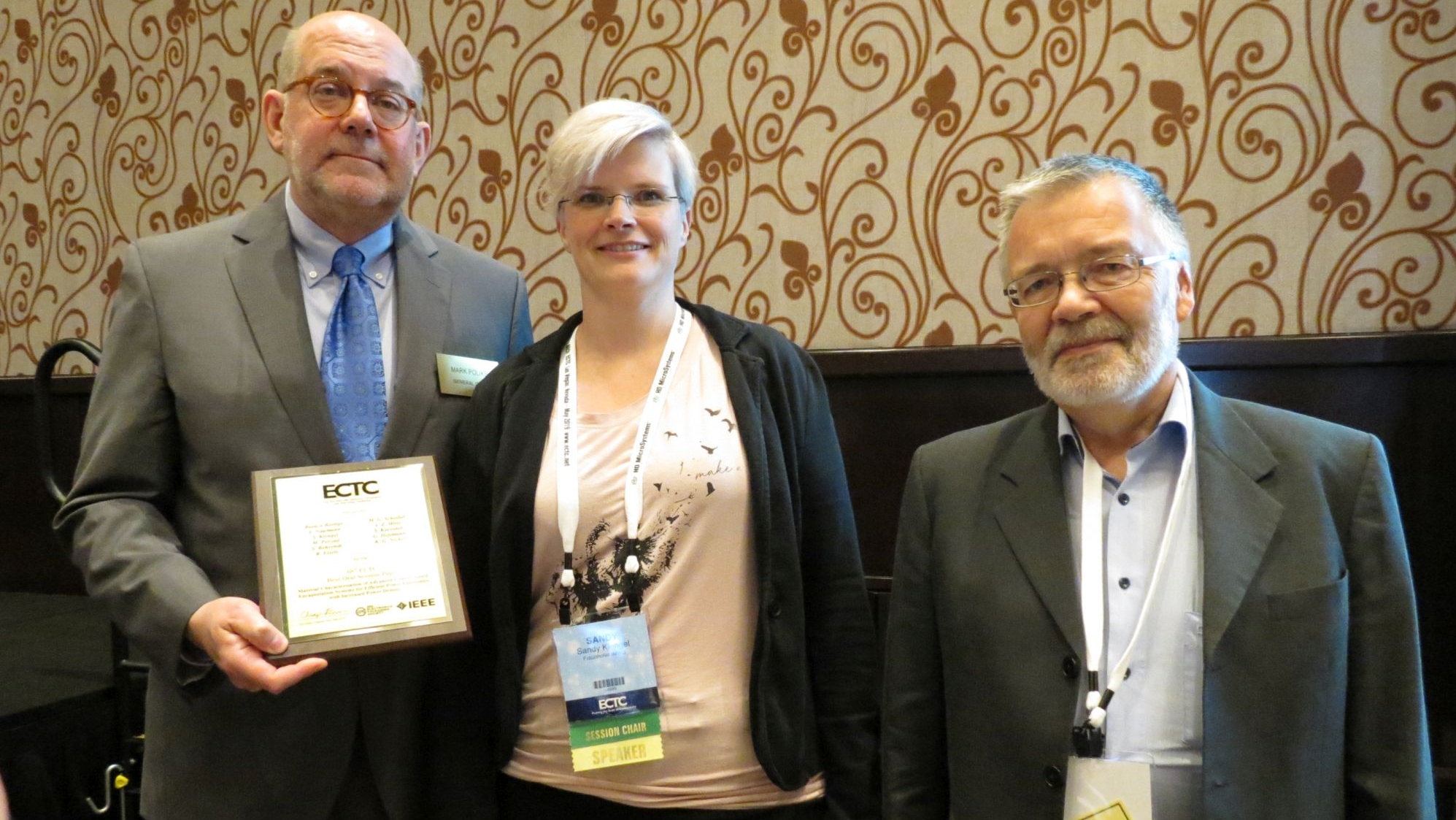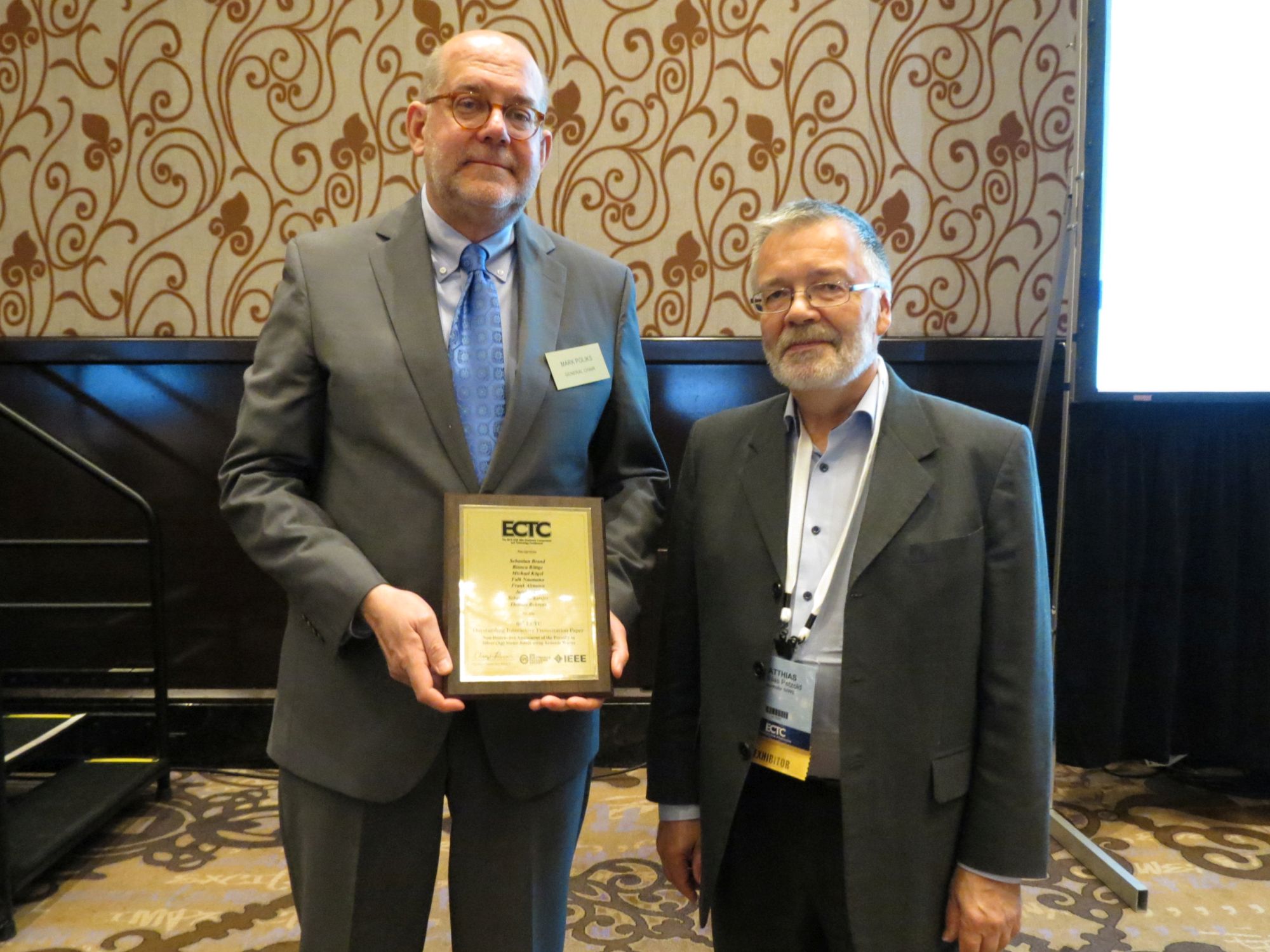The awards for the Best Session Paper and Outstanding Interactive Presentation Paper went to Halle
Better ways to operate power electronic components at particularly high temperatures and a new procedure for the non-destructive assessment of their joining layers: For these discoveries, experts from the Fraunhofer Institute for Microstructure of Materials and Systems IMWS received awards at the Electronic Components Technology Conference (ECTC) in Las Vegas. Two of the four research awards presented at the world's leading technical conference for design and packaging technologies in electronics went to Halle (Saale).


At the Electronic Components Technology Conference (ECTC), which took place this year from May 28-31 in Las Vegas and is a combination of a technical conference and an industrial exhibition, the most important global trends in microelectronic packaging, components, and systems technology were presented. Leading experts and manufacturers presented new research findings and product developments to the over 1500 international participants. In addition, the best research papers in four categories from the conference held the year before in San Diego were also awarded.
Two of the prizes were awarded to the Fraunhofer IMWS in Halle: Bianca Böttge, Falk Naumann, Sandy Klengel, and Matthias Petzold, together with other authors, wrote a paper on the material characterization of advanced cement-based encapsulation systems for efficient power electronics with increased power density, which received the award for the Best Session Paper of the conference held in 2018. The Outstanding Interactive Presentation Paper award went to Sebastian Brand, Bianca Böttge, Michael Kögel, Falk Naumann, Frank Altmann, and other authors for their work on the non-destructive assessment of the porosity in silver sinter joints using acoustic waves.
“The fact that two of the four awards presented at the world’s leading conference in the area of packaging, components, and microelectronic systems technology went to Halle is an enormous success and a great recognition of our expertise in the area of material characterization in microelectronics. I see this as proof that we have been able for many years to successfully combine scientific excellence with the current requirements of the industry in a high-tech field”, said Prof. Matthias Petzold, Deputy Director of the Fraunhofer IMWS.
The paper written by Bianca Böttge and her team presented novel phosphate cement-based and calcium aluminate cement-based material systems. These material systems have enhanced thermal, mechanical, and thermomechanical properties for the encapsulation of power electronic devices and modules. Through use of these materials it is possible to operate power electronic systems at higher temperatures. In their study the authors characterized in particular the novel encapsulation materials through high-resolution microstructural analysis and developed a modeling approach for material design optimization.
The paper from Sebastian Brand and his colleagues takes a look at new compound semiconductors based on gallium nitride (GaN) or silicon carbide (SiC). Due to their superior performance in terms of bandwidth and power loss, they are particularly interesting for applications in the high power segment. However, the higher power densities involved require a special thermal concept for the packaging, which is why silver sintering is often used instead of soldering techniques to optimize the thermal conductivity. The authors used scanning acoustic microscopy to enable the non-destructive assessment of the porosities of such sinter layers at the microscopic and macroscopic scales. The results enable important conclusions to be drawn regarding the thermal and mechanical behavior of the sinter layers, which is a crucial factor for the reliability of the corresponding components.
The Fraunhofer Center for Microstructure Diagnostics CAM, which is part of the Fraunhofer IMWS, has also used the opportunity this year at the ECTC to exchange ideas with the world’s leading companies and institutes in the industry and to present new research findings. One team from the institute, together with partners from the Nippon Micrometal Corporation in Japan, presented a new, corrosion-resistant gold/palladium-coated copper wire that promises to offer significant advantages in terms of reliability. Sandy Klengel, who presented the study as the project leader, also headed a session on the reliability of electronic components for automotive applications subject to extreme operating conditions. Matthias Petzold was responsible for the Professional Development Courses at the conference, which dealt with the importance of robust electronics for automotive applications, and especially for autonomous driving.
“This shows how in-demand our expertise is, even at the global level. When we examine the requirements of autonomous driving, Industry 4.0, or power electronics solutions for the energy revolution, we can only conclude that the importance of competency in material diagnostics and material design will increase. These technologies will only achieve the required level of acceptance, and our clients will only be able to exploit their potential if we can ensure their robustness and reliability at the smallest scale”, said Petzold.